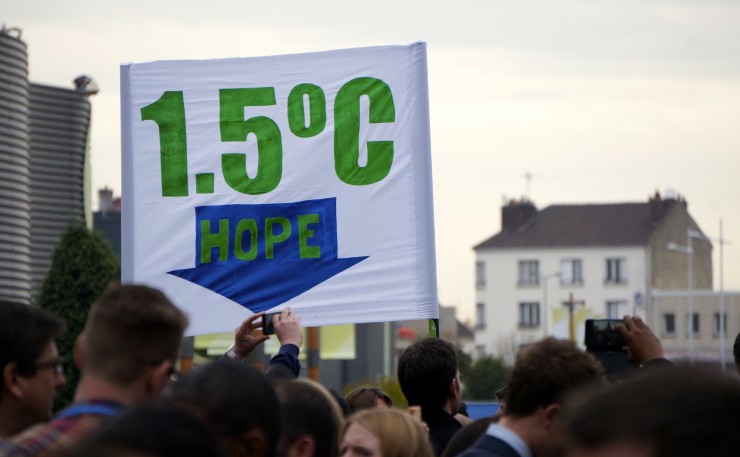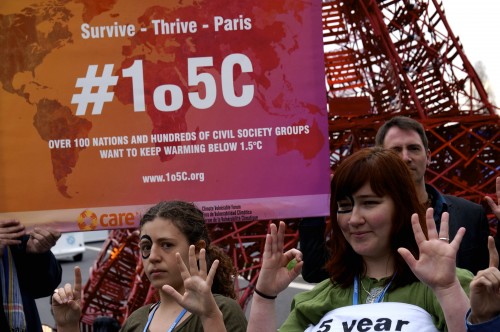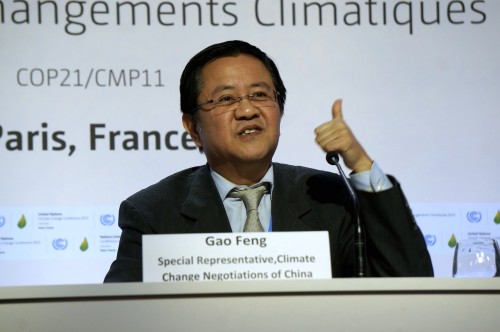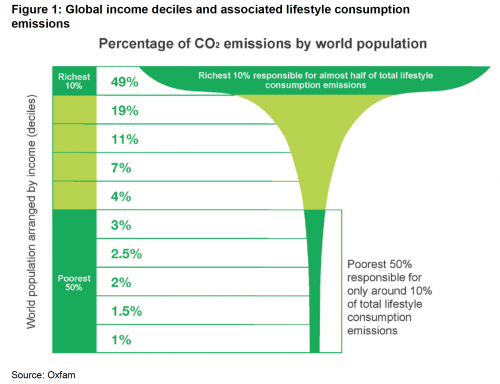Most of the ingredients for a good deal are still on the table at the Paris climate talks. But with Ministers set to make the big calls over the next 24 to 48 hours, we could still end up with an onion. Thom Mitchell reports from Paris.
Climate talks in Paris have reached the witching hour.
Senior negotiators and Ministers are pulling literal all-nighters, probing the politics in search of consensus, and trying to bridge gaps and strong-arm rivals on the overarching political questions which four years of tentative diplomacy have left unresolved.
It was the world leaders who flew in on the first day of the talks – on the last day of November – to issue forth with grandiose proclamations about saving the planet. But it’s their Ministers and senior delegates who are now playing poker, and sometimes cheat, to try and give affect to the instructions heads of state left behind.
There has been little movement on key issues since the politicians took over at the start of the week, and a draft text issued Wednesday afternoon leaves the major sticking points unresolved.
It’s cleaner than its previous incarnations, released in stages last week, but a standoff between developing countries and their wealthier counterparts is dragging on. Somebody is going to have to give ground, or shots will inevitably be fired.
A so-called Coalition of Ambition, which New Matilda understands was approaching a membership of something like 80 countries on Thursday, has formed to drive a split or change in negotiating position in the monolithic G77 group of more than 130 developing nations, which includes China as its heavyweight member.
It’s been a central focus of conference-watchers since its inception during this second week, and its key aim is forcing a resolve of the issue of ‘differentiation’ between rich and poor nations.
The legal foundation of the Paris climate talks, the United Nations Framework Convention on Climate Change, was devised in 1992, and the bifurcation between rich and poor that existed then has become far more complex. Big emitters like India and China now find themselves in conflict with members of the self-appointed Coalition of Ambition, many of which are also developing nations themselves, and the politics at this stage are dense, fluid, and largely impenetrable to the outside-eye.
A push to step up the overall ambition of the Paris agreement has gained serious traction since the talks opened, with a fresh goal of limiting the rise in average global temperatures to 1.5 degrees rather than 2 emerging as a legitimate consideration.
It’s far more likely the 1.5 degree goal, which is supported by more than half the countries at the talks, will only receive a reference. However pinning down some mention is seen as crucial by vulnerable countries and civil society. It could be used as the basis for a future drive to usurp the two degree goal, which science is increasingly telling us risks some countries’ existence, and others’ stability and security.
Crucially, though, the temperature guardrail, whatever it ends up being, must be underpinned by a collective long term goal that sets out a trajectory for global greenhouse gas emissions reductions.
On this front, the current text entertains two options.
The first is for reductions on 2010 level greenhouse gas emission of 40-70 per cent – or 70-95 per cent – by 2050. The second, less ambitious option, is around a “transformation” towards either “climate neutrality” or “decarbonisation” over the “course of this century”.
Nobody seems to know what “climate neutrality” means, and it’s widely accepted that a timeframe for greenhouse gas emission cuts stretching out to 2100 would not send a sufficiently strong signal to investors and business to move away from fossil fuels.
A percentage reduction of greenhouse gas emissions will be an anathema to some countries, but it more closely reflects the science (being based on work by the international science body which supports the United Nations climate process). As it stands in the current text, being linked to the shorter timeframe of 2050 and ‘net-zero greenhouse gas emissions’, this goal would also place more onerous demands of the greenhouse gas emissions of emerging economies (read China and India).
With growing populations, and in India in particular a domestic political promise to extend ‘electricity to all’ the 300 million without it by 2022, these emerging economies are loath to commit to sharp cuts to emissions. China has promised to peak its by 2030, but India has volunteered for no such constraints on its net emissions growth.
A big part of the work of the Coalition of Ambition is to gerrymander the system being framed at Paris, for a scaling up of ambition over time, so that pressure can be brought to bear on multiple fronts to drive some sort of buy-in to that system by players like China and India.
It’s part of the broader ambition of the Paris agreement to devise a framework for ‘ratcheting up’ the individual climate change plans submitted by nations ahead of the conference, because they don’t keep temperatures even below two degrees as they stand.
But how this relates to the Principle of ‘common but differentiated responsibility’ set out in the original convention, like most of the agreement, is still very much up for grabs.
And it’s at the centre of the all-night meetings being staged around huge square tables that accommodate 80-or-so people from as many countries at a time. The idea is that nations’ climate commitments, determined domestically and presented as an offering to the United Nations, will be subject to accounting, transparency, and ultimately reviewed, most likely every five years.
This would allow individual contributions to be summed up in a ‘global stocktake’, to get a clear picture of how efforts to meet the collective long term goal are tracking. However many of the developing countries will need support to engage in this process, and will have different levels of capacity that will inform what can be realistically expected of them.
And determining how to set up a spectrum which recognises this, and a system that prevents backward movement in ambition and commitment, is the rope in this negotiating tug-of-war.
It’s a complex picture. A nuanced balance between the rich dodging their responsibility for the lion’s share of historical emissions, and emerging economies trying to lock in a multi-decadal agreement that does not recognise their increasing capacity and emissions, needs to be struck.
And, of course, the politics are incredibly complex.
Adding to this complexity are a series of vexed questions, which have multiplied during the conference, around who will pay. Developed states have accepted for years now that they must help with contributing funds that will assist developing nations which are vulnerable to climate change, but without the means to adapt to its affects, and how this will look moving forward is another critical issue which even at this late stage in the negotiations remains largely unresolved.
Earlier this week an existing split on the finance front widened, with China, South Africa and Brazil joining India in dismissing analysis from the Organisation for Economic Cooperation and Development which suggested a pledge by developed countries to provide $100 billion by 2020 was three quarters of the way to being met.
Some sort of bridge will need to be built to brook that fjord. The equally, and in the long term more, crucial issue of how and when another pledge by rich countries to ‘mobilise’ climate finance of $100 billion through public and private means each year after 2020 will be managed also remains largely unresolved.
Developing countries are seeking some security around financing for adaptation, as opposed to the easier mission of mitigation. The private sector is more willing to engage with mitigation because it can be more easily made profitable, but developing nations are seeking security of adaptation finance so they can make long term planning decisions with the assurance of durable finance flows.
There would appear to be a broad acceptance, in spite of the complexities around establishing a framework, that the $100 billion commitment from rich states is a ‘floor’. But developed countries have raised the hackles of big emitters which have already provided south-south finance, like China, by opening up a conversation around expanding the donor base to include countries which were considered to be ‘developing’ in 1992.
Again, tricky language on recognising that the world has changed since 1992, but that China and India are not in the same position as the United States or much of the European Union, will be key.
Clearly, there’s a lot to work out.
The French Conference President, who’s now guiding the negotiations, and trying to keep the nearly 200 countries involved in the negotiations from breaking into open conflict, has said he wants to see things wrapped up by tomorrow, so the document can be legalled on Friday when the summit is supposed to close.
At this stage, that looks unlikely. But a new text is expected imminently, and those not privy to the closed all-night negotiating sessions will have a better idea of where the process it at when it’s released. The talks are unlikely to descend into disarray and open vitriol, as they did at Copenhagen in 2009, and the French have been widely praised for their diplomatic prowess.
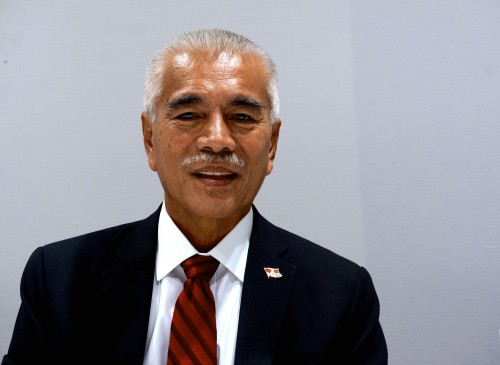
There’s also a much more genuine desire to strike an ambitious deal than there was half a decade ago, too, as the science has become clearer and the reality of climate change has started to bite, particularly in nations like the Pacific Ocean atoll of Kiribati.
As the President of that already climate-affected country, whose homeland is threatened with inundation by the rising seas, told New Matilda on Tuesday, “What we are doing here is we are negotiating with nature: But nature does not negotiate, it destroys you if you don’t do right.”
Donate To New Matilda
New Matilda is a small, independent media outlet. We survive through reader contributions, and never losing a lawsuit. If you got something from this article, giving something back helps us to continue speaking truth to power. Every little bit counts.

